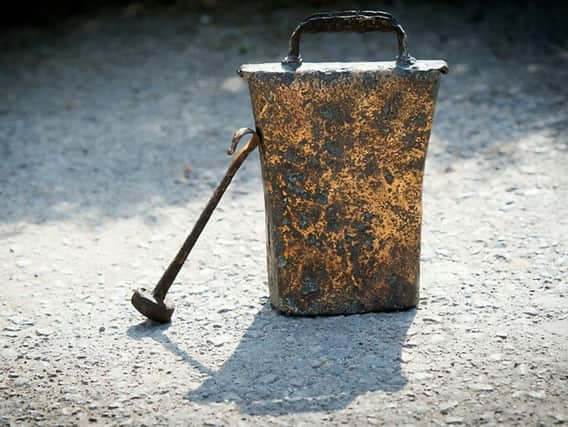South Warwickshire woman to make windfall after old bell found in field revealed to be 1,500 years old and worth thousands


The historic artefact, made of iron plate mixed with copper alloy, was originally dug up on farmland in the 1920s.
The man who found it gave it to his mother who kept it on her dressing table for decades before she died and it passed down to her granddaughter.
Advertisement
Hide AdAdvertisement
Hide AdShe kept the bell a box in her garage for more than 20 years before she took it to be valued out of curiosity.


Incredibly, experts discovered the bell dates back to the 5th or 6th century and was probably rung in a Celtic monastery.
It is now going under the hammer and is expected to fetch up to £3,000.
The woman who owns the bell, from Stratford-upon-Avon, Warwickshire, said: “My father, who was born in 1904, dug up the bell in the early 1920s while working on his parents’ farm, which is in north Gloucestershire and not far from Stratford.
Advertisement
Hide AdAdvertisement
Hide Ad“Apparently, he was not too far from the old farmhouse, digging a hole to find drain pipes, when he found it.


“He gave it his mother who washed all the mud off and said, ‘Oh, it’s a bell’.
“She displayed it on the dresser as an ornament and my grandparents did wonder if it was a cow bell.
“My parents inherited it and, from when I was a small child, I always remember it being on the dresser.
Advertisement
Hide AdAdvertisement
Hide Ad“Every now and then my mother would give it a polish with some Brasso.


“I inherited the bell and, to be honest, it’s been kept in a box in the loft and in a cupboard in the garage.
“Recently, I took it along to a free valuation event run by Hansons at Stratford and discovered it could be quite valuable.
“No one in my family wanted it so I thought it would be nice to give a keen collector the opportunity to buy it. Perhaps a museum would like it.”
Advertisement
Hide AdAdvertisement
Hide AdThe bell will be sold along with a note from a Scottish antiquarian expert who studied a photo of the bell in 1924.


The note, dated October 29, 1924, described it as being of Celtic origin, about 1,500 years old with a handle “not at all like a cow bell”.
James Brenchley, Head of Ancient Art, Antiquities and Classical Coins at Hansons Auctioneers who are handling the sale, said: “It’s thought the bell was in a large building, possibly a monastery of the time.
"It’s wonderfully detailed work for the period.
“At a time when metal detectors didn’t exist, this is an amazing find. It has been treasured for many years within the family.”
The bell will be sold on Monday November 11.